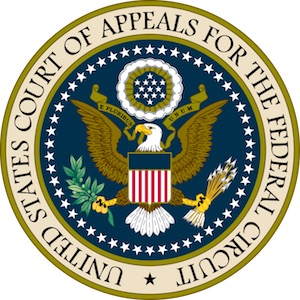Architect of America Invents Act announces retirement from House
 Longtime Texas Representative Lamar Smith (R-TX), chairman of the House Committee on Science, Space, & Technology, will be retiring from his duties on Capitol Hill and will not seek reelection for another term of service. Smith, a former Chairman of the House Judiciary Committee and powerful member of the Republican leadership, will leave a void. His retirement marks the end of a 30-year tenure of public service and will immediately create a leadership void on the House committee responsible for overseeing our nation’s science and space policies.
Longtime Texas Representative Lamar Smith (R-TX), chairman of the House Committee on Science, Space, & Technology, will be retiring from his duties on Capitol Hill and will not seek reelection for another term of service. Smith, a former Chairman of the House Judiciary Committee and powerful member of the Republican leadership, will leave a void. His retirement marks the end of a 30-year tenure of public service and will immediately create a leadership void on the House committee responsible for overseeing our nation’s science and space policies.
Smith was first sworn into office at the U.S. House of Representatives in 1987 and has served the 21st congressional district of Texas, which includes areas of Austin and San Antonio and parts of the Texas Hill Country, since that time. During his time in Congress, Smith has been involved with the sponsorship of legislation related to technology including the Stop Online Piracy Act (SOPA) and the STEM Education Act of 2014. Many readers of this blog will recall that Smith was an original co-sponsor to the Leahy-Smith America Invents Act (AIA) of 2011, along with Democratic Representative Patrick Leahy (D-VT). That piece of legislation created the Patent Trial and Appeal Board (PTAB), an Article I executive branch tribunal which is being challenged on constitutional grounds before the U.S. Supreme Court in Oil States Energy Services, LLC v. Greene’s Energy Group, LLC.
Invention details need not be public to be prior art under AIA
 The United States Court of Appeals for the Federal Circuit recently issued a major decision interpreting provisions of the America Invents Act (AIA), specifically the AIA on-sale bar provisions. In Helsinn Healthcare S.A. v. Teva Pharmaceuticals USA, Inc., the Federal Circuit panel of Judges Dyk, Mayer and O’Malley determined: “after the AIA, if the existence of the sale is public, the details of the invention need not be publicly disclosed in the terms of sale” for the sale to be invalidating. In so reaching this ruling, the Federal Circuit has largely done away with the belief that the AIA created some kind of “safe harbor” for sales that did not disclose the details of the claimed invention.
The United States Court of Appeals for the Federal Circuit recently issued a major decision interpreting provisions of the America Invents Act (AIA), specifically the AIA on-sale bar provisions. In Helsinn Healthcare S.A. v. Teva Pharmaceuticals USA, Inc., the Federal Circuit panel of Judges Dyk, Mayer and O’Malley determined: “after the AIA, if the existence of the sale is public, the details of the invention need not be publicly disclosed in the terms of sale” for the sale to be invalidating. In so reaching this ruling, the Federal Circuit has largely done away with the belief that the AIA created some kind of “safe harbor” for sales that did not disclose the details of the claimed invention.
After first determining that a sale had occurred, the Federal Circuit turned to the language of the statute and the legislative history of the AIA. “We next address whether the AIA changed the meaning of the on-sale bar under 35 U.S.C. § 102 so that there was no qualifying sale as to the ‘219 patent,” Judge Dyke wrote.
06.26.17 | Federal Circuit Cases, Patent Issues | Gene Quinn
Supplemental Examination to Cleanse Inequitable Conduct
 One of the new provisions of the America Invents Act that went into effect last week authorizes Supplemental Examination. Supplemental examination will probably be used less frequently than the USPTO thinks it might be, but it will still be valuable in a small percentage of cases. We all know that inequitable conduct does not happen nearly as often as some might think or suggest, but it does happen. If there is inequitable conduct, supplemental examination is the route to go because it inoculates you from losing the patent.
One of the new provisions of the America Invents Act that went into effect last week authorizes Supplemental Examination. Supplemental examination will probably be used less frequently than the USPTO thinks it might be, but it will still be valuable in a small percentage of cases. We all know that inequitable conduct does not happen nearly as often as some might think or suggest, but it does happen. If there is inequitable conduct, supplemental examination is the route to go because it inoculates you from losing the patent.
Before examining the inoculation effect, let’s explore what is required to initiate a supplemental examination. Pursuant to 37 CFR 1.610(b), a complete request for supplemental examination must contain: (1) An identification of the number of the patent for which supplemental examination is requested; (2) A list of the items of information that are requested to be considered, reconsidered, or corrected; (3) A list identifying any other prior or concurrent post-patent Office proceedings involving the patent for which supplemental examination is being requested; (4) An identification of each claim of the patent for which supplemental examination is requested; (5) A separate, detailed explanation of the relevance and manner of applying each item of information to each claim of the patent for which supplemental examination is requested; (6) A copy of the patent for which supplemental examination is requested and a copy of any disclaimer or certificate issued for the patent; (7) A copy of each item of information (other than U.S. patents and published U.S. patent applications) accompanied by a written English translation of all of the necessary and pertinent parts of any non-English-language item of information; (8) A summary of the relevant portions of any submitted document that is over 50 pages in length; and (9) An identification of the owner(s) of the entire right, title, and interest in the patent requested to be examined, and a submission by the patent owner establishing the entirety of the ownership in the patent requested to be examined.
09.26.12 | posts | Gene Quinn
America Invents Phase 2 Implemented
 At 12:01 am on Sunday morning, September 16, 2012, phase 2 of the America Invents Act (AIA) went into effect. This is the culmination of many months of work on the part of the United States Patent and Trademark Office to first propose the necessary rules and then consider all of the comments received, finally implementing final rules in July and August.
At 12:01 am on Sunday morning, September 16, 2012, phase 2 of the America Invents Act (AIA) went into effect. This is the culmination of many months of work on the part of the United States Patent and Trademark Office to first propose the necessary rules and then consider all of the comments received, finally implementing final rules in July and August.
No fewer than seven substantive rule sets have been implemented on time to meet the legislation’s September 16, 2012, effective date. The new rules are as follows:
- Inventor’s Oath or Declaration Final Rules (77 Fed. Reg. 48776, August, 14, 2012)
- Supplemental Examination Final Rules (77 Fed. Reg. 48828, August 14, 2012)
- General Administrative Trial Final Rules (77 Fed. Reg. 48612, August 14, 2012)
- Inter Partes, Post Grant, and Covered Business Method Review Final Rules (77 Fed. Reg. 48680, August 14, 2012)
- Covered Business Method and Technological Invention Definitions Final Rules (77 Fed. Reg. 48734, August 14, 2012)
- Trial Practice Guide (77 Fed. Reg. 48756, August 14, 2012)
- Citation of Prior Art in a Patent File (77 Fed. Reg. 46615, August 6, 2012)
- OED Statute of Limitations Final Rules (77 Fed. Reg. 45247, July 31, 2012)
09.20.12 | posts | Gene Quinn
Next Wave of AIA on Patent Exam Starting Oct. 2, 2012
 By now you have certainly heard about the most revolutionary change to the U.S. patent laws since at least 1952, and most likely since the inception of the first patent laws in the U.S. in 1790. The America Invents Act (AIA) is poised to change patent practice from the ground up. The bill was signed into law by President Obama on September 16, 2011, and some minor provisions went effective immediately, or nearly immediately.
By now you have certainly heard about the most revolutionary change to the U.S. patent laws since at least 1952, and most likely since the inception of the first patent laws in the U.S. in 1790. The America Invents Act (AIA) is poised to change patent practice from the ground up. The bill was signed into law by President Obama on September 16, 2011, and some minor provisions went effective immediately, or nearly immediately.
The next wave of changes comes online on September 16, 2012, and the United States Patent and Trademark Office is feverishly working on multiple final rules packages that will be required for the implementation of that next wave of changes. So far, the only one that has been released is the final rules package relative to third-party submissions of prior art during prosecution. See USPTO Publishes Final Rule on Preissuance Submissions.
07.20.12 | America Invents Act, Patent Bar Exam, USPTO | Gene Quinn


No Comments
11.27.17 | America Invents Act, Patent Issues, Patent Reform | Gene Quinn